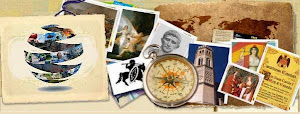Concept and What is: Archetypes | Psychology
The archetype is a typical concept, inspired by neoplatonic Plotinus. According to this conception, there is a universe in which everything is permanent and unchanging, populated by unique ideas. In this way, in the world of sensitive insights, everything is mere reproduction than exists in the upper sphere.
Through the influence exerted by this thought, the term archetype reached the philosophical, Christianity and was soon adopted by Augustine. In analytical psychology, coined by Carl Gustav Jung, this concept refers to the primitive images inserted in the collective unconscious since the dawn of the human being. Are inherent in the molds be since the principle of existence, which have the function of acting as a primary source for the ripening of the mind. This design was inspired by the world of the ideas of Plato, which is nothing more than the array of everything there is in what we consider our reality.
According to Jung, the Archetypes are born of the constant renewal of experiences experienced over several generations. This learning is necessary so that man walk towards its individuation, i.e. in the direction of your most perfect stoning, for that one day can come together again to your Self. Thus, this incessant acquisition of knowledge and experiences, performed for thousands of years during the human journey, is administered by the archetypes, which for better structuring this achievement generated models responsible for psychic work.
The Archetypes are, therefore, under the hood of all our thoughts, feelings, emotions, intuitions, feelings and attitudes. Usually they are expressed through symbols, as are structural composition hidden from human eyes. Some of these archetypes conquered such independence that stood out from the scope of the individual conscience of the ' I '-persona; the anima or female aspect of man; the animus or the masculine side of women; and the shadow.
The archetypal symbols are found in the original myths, in the most varied religions, legends that are already part of the collective cultural baggage, which mark definitely the conscience and particularly the human unconscious sphere. Some of these archetypes: the mother figure, the image of the father, the child, the hero, the divine, among others. They constitute, for Jungian psychology, intangible manifestations that shape the psychic events.
The Archetypes are generated at the contact of man with the concrete world, there are no previously. The only one who can fit in the category a priori is the immanent human attraction to the divine sphere, namely, humanity is always preparing for the contact with God, first archetype of the human mind. The collective unconscious is precisely composed of the archetypes, themes present in the psychic of every organization.

Through the influence exerted by this thought, the term archetype reached the philosophical, Christianity and was soon adopted by Augustine. In analytical psychology, coined by Carl Gustav Jung, this concept refers to the primitive images inserted in the collective unconscious since the dawn of the human being. Are inherent in the molds be since the principle of existence, which have the function of acting as a primary source for the ripening of the mind. This design was inspired by the world of the ideas of Plato, which is nothing more than the array of everything there is in what we consider our reality.
According to Jung, the Archetypes are born of the constant renewal of experiences experienced over several generations. This learning is necessary so that man walk towards its individuation, i.e. in the direction of your most perfect stoning, for that one day can come together again to your Self. Thus, this incessant acquisition of knowledge and experiences, performed for thousands of years during the human journey, is administered by the archetypes, which for better structuring this achievement generated models responsible for psychic work.
The Archetypes are, therefore, under the hood of all our thoughts, feelings, emotions, intuitions, feelings and attitudes. Usually they are expressed through symbols, as are structural composition hidden from human eyes. Some of these archetypes conquered such independence that stood out from the scope of the individual conscience of the ' I '-persona; the anima or female aspect of man; the animus or the masculine side of women; and the shadow.
The archetypal symbols are found in the original myths, in the most varied religions, legends that are already part of the collective cultural baggage, which mark definitely the conscience and particularly the human unconscious sphere. Some of these archetypes: the mother figure, the image of the father, the child, the hero, the divine, among others. They constitute, for Jungian psychology, intangible manifestations that shape the psychic events.
The Archetypes are generated at the contact of man with the concrete world, there are no previously. The only one who can fit in the category a priori is the immanent human attraction to the divine sphere, namely, humanity is always preparing for the contact with God, first archetype of the human mind. The collective unconscious is precisely composed of the archetypes, themes present in the psychic of every organization.
Published for educational purposes
